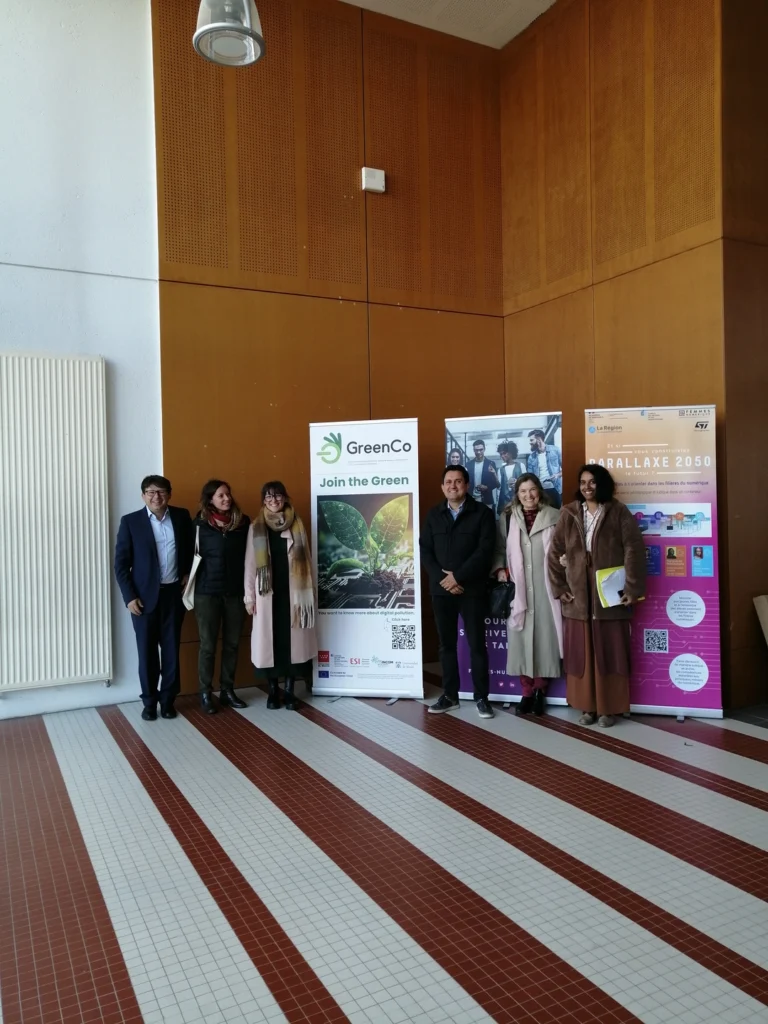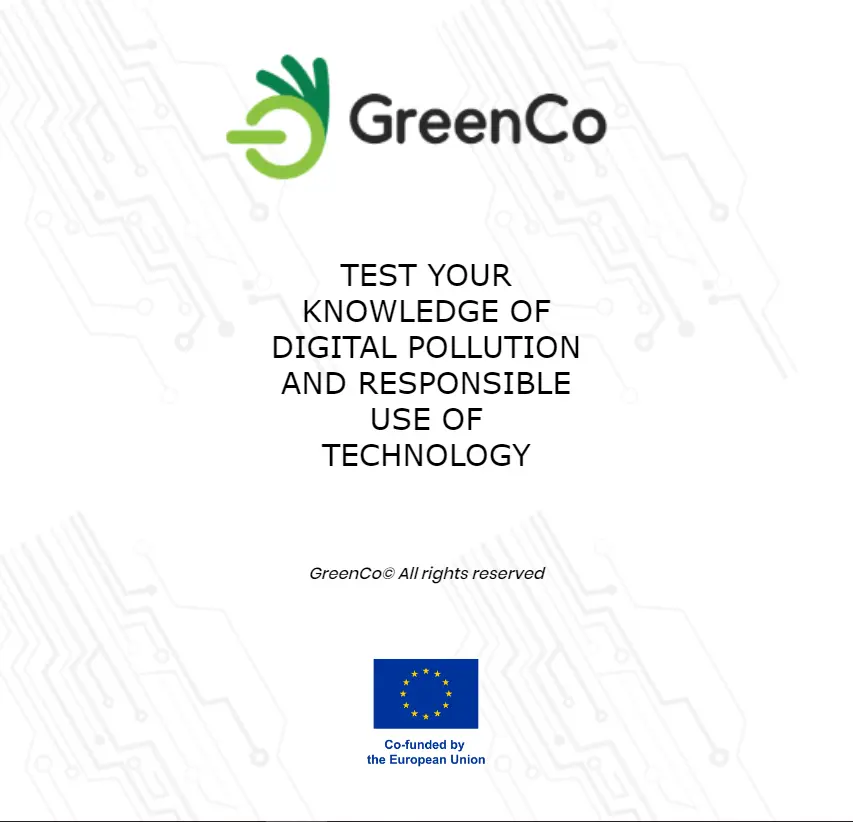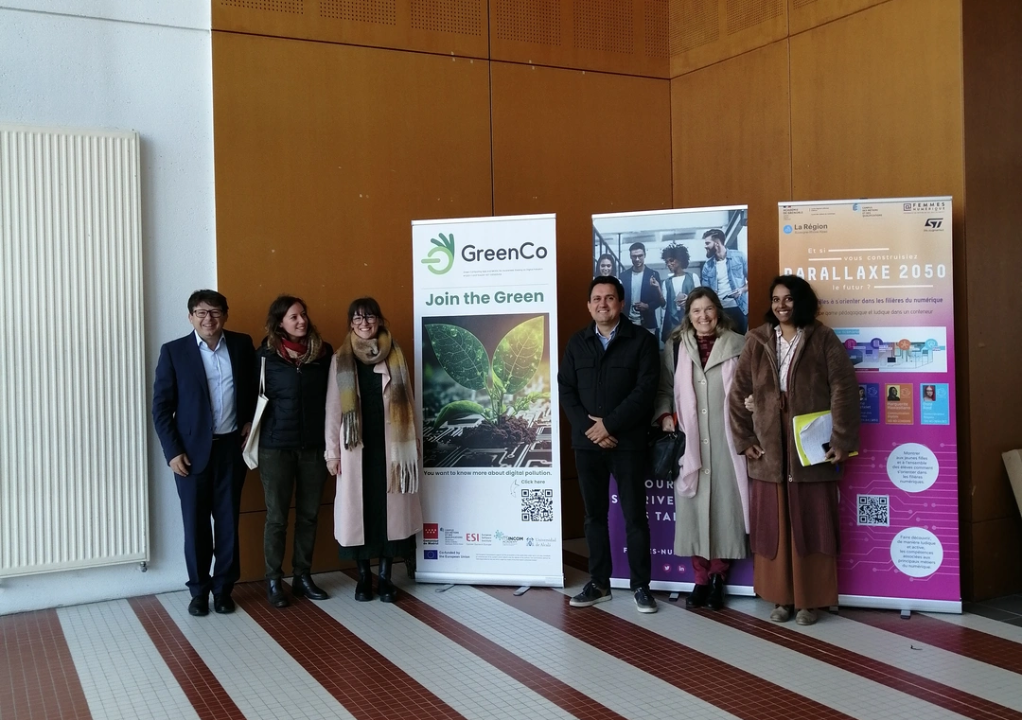GreenCo visit to Valence
On the 6th and 7th of November was held the 3rd transversal meeting of the project GreenCo funded by ERASMUS +.
Partners from all over Europe had the opportunity to meet in Valence, France at the CMQ IED hosted by the Lycée Polyvalent Algoud Laffemas. GreenCo’s ambition is to promote digital greening.
The main question remains the same:
How to create a society with digital sustainability in this era of high consumption of electrical devices that use a lot of data?
The essential is to promote digital sustainability via workshops, learning curriculum and so on.
The agenda of the European team was dedicated to improving this promotion of the green era.
Digital Greening: A Call to Responsibility from the Younger Generation
1/ Why do we need to talk to the younger generation about digital greening?
The younger generation, lulled by the digital revolution, must now face up to an inescapable reality: digital pollution. Digital greening has become an imperative if we are to guarantee a sustainable future. Young people are the key players in this transformation, as they are the most assiduous users of technology. Raising this generation’s awareness of the environmental impact of their online actions is essential to raise awareness and encourage behaviour that is more respectful of the planet.
2/ Examples of digital pollution
Digital pollution, which is often overlooked, manifests itself through various facets of the digital world. The excessive consumption of streaming videos, whether on YouTube, Netflix or other platforms, generates considerable energy consumption, contributing to carbon emissions. Data centres, which are needed to store huge amounts of data, are another major source of pollution. Incessant emails, unnecessary downloads and obsolete electronic devices also contribute to this digital carbon footprint.
As well as excessive video consumption, online searches are also a source of digital pollution that is often overlooked. Every query made on a search engine generates CO2 emissions, mainly due to the operation of the servers. Encouraging the use of eco-responsible search engines and adopting more efficient search practices can help reduce this impact.
3/ Tips for reducing digital pollution
Reducing digital pollution requires both individual and collective action. Opting for standard quality video rather than high definition can significantly reduce bandwidth consumption. Deactivating unnecessary notifications on applications reduces the demand on server resources. Recycling electronic devices and regularly updating software helps to extend the lifespan of devices. Finally, responsible email management and regular deletion of unnecessary files limit server overload. Together, these small gestures can have a significant impact on reducing digital pollution, ensuring a greener future for the planet.
Another crucial action for reducing digital pollution is to promote the circular economy in the area of electronic devices. Rather than throwing out obsolete equipment, professional recyclers can salvage it to recover valuable materials while avoiding the creation of e-waste. In addition, promoting modular electronic product design, making it easier to repair and upgrade individual components, helps to extend the life of devices and reduces the demand for new resources to manufacture new devices.
4/ GreenCo’s action plan for the promotion of green computing
The creation of a MOOC and an e-learning app will drive GreenCo’s aim to promote the decrease of digital pollution to another level.
MOOC
The online class’s main goal will be to provide useful tips to:
- Reduce electronic devices’ carbon footprint based on efficient energy consumption and e-waste recycling.
- Identify the environmental consequences related to data usage and e-waste.
- Classify the initiatives to be undertaken for more sustainable technology usage.
- Plan individual actions to reduce digital pollution.
The structure of this MOOC will be based on a fun and attractive architecture so learners will be able to memorize each unit thanks to video learning, infographics and assessments.
E-LEARNING APP
The app development requires an agile method using sprints and review, and test phases in order to bring out a final product that will reach the target audience.
The app is composed of various question and answer sessions where the learner can be informed about crucial data concerning green computing, digital pollution and its effect.
The pedagogic scenario revolves, on the one hand, around a group of young people trying to save the earth from a disastrous future if nothing is done to reduce pollution. On the other hand, there is another level where they can explore a hypothetical journey to Mars and solve questions about digital sustainability.
A compelling storytelling will guide the learners through 4 levels of achievement. Energy consumption, E-waste recycling, initiatives and legislation.
While we eagerly wait for the completion of the app and the MOOC,
Download the e-book now and embark on a journey toward a greener, more sustainable digital future.


photo credits : property of GreenCO
